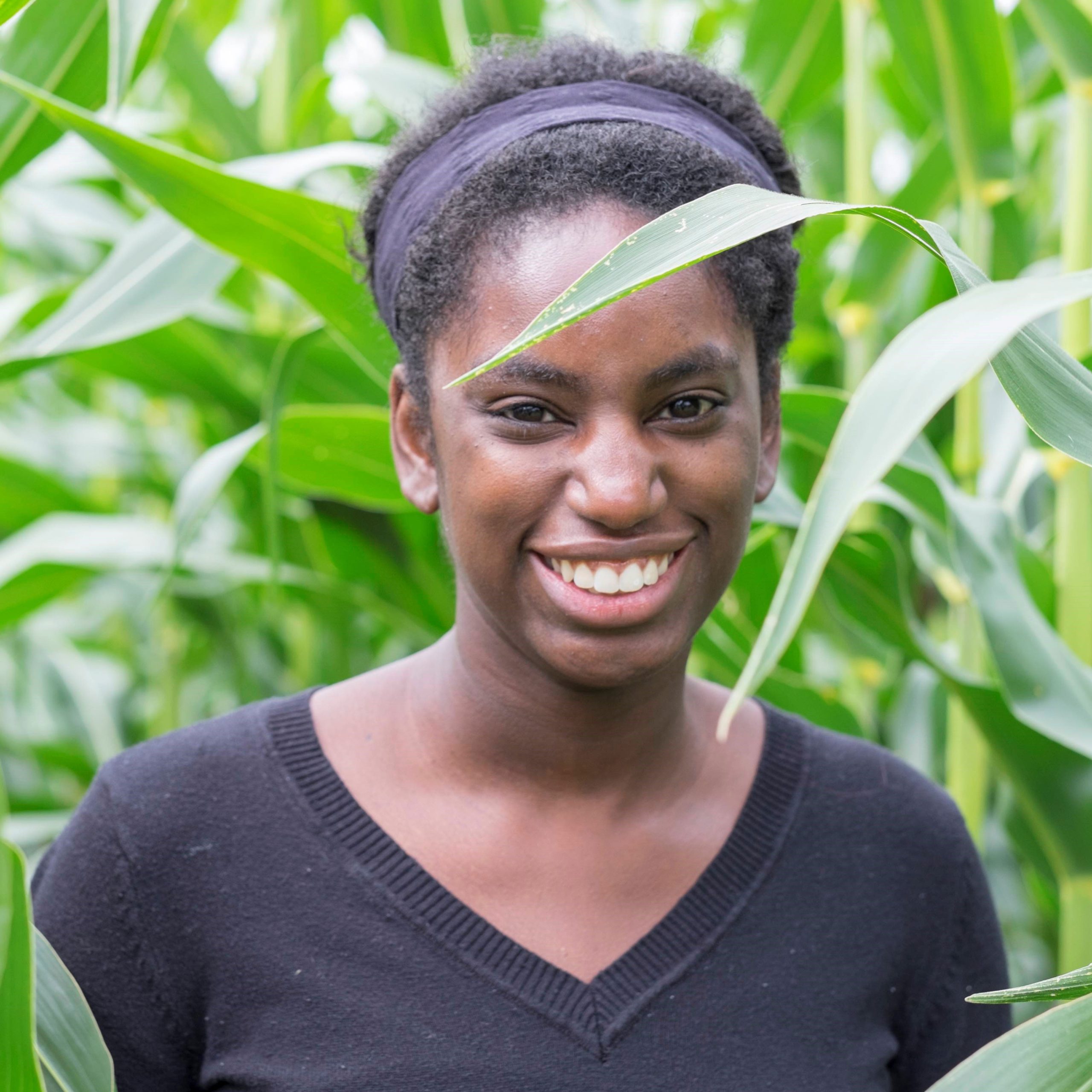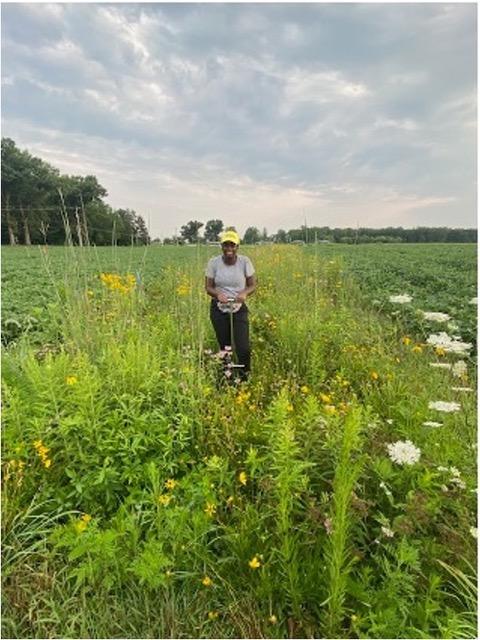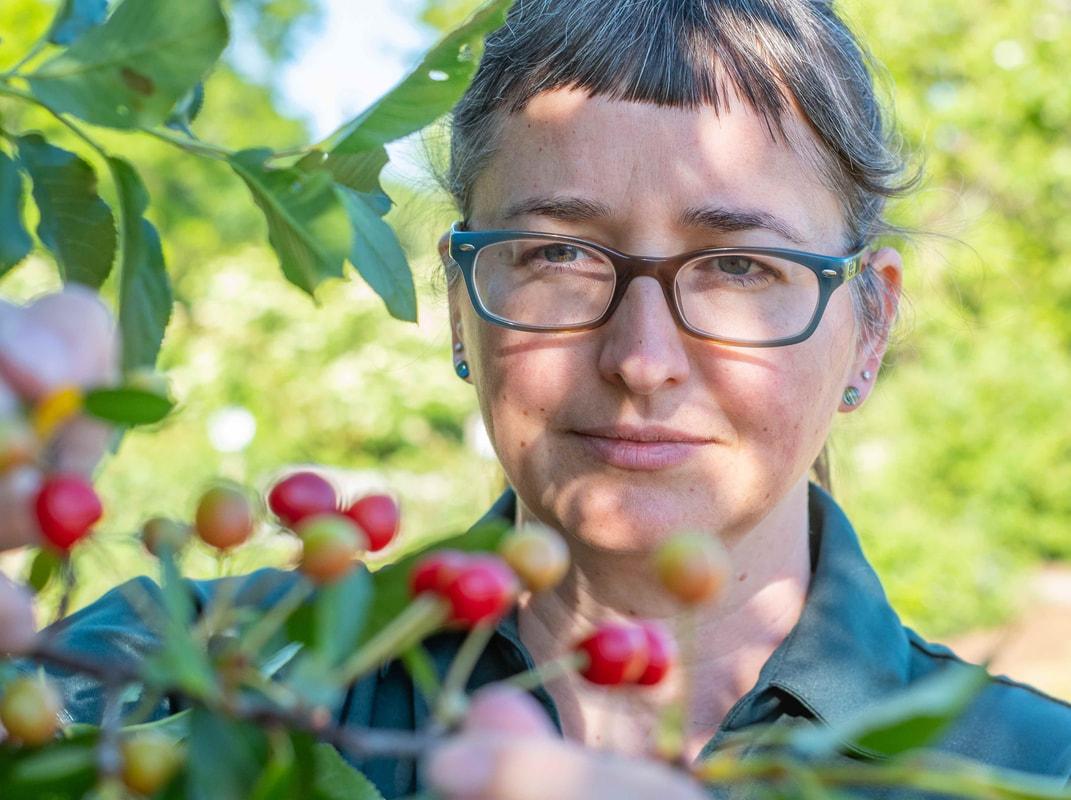Three MSU projects receive seed funding for sustainable agriculture collaborations
Grants seek to lay foundation for continued research for advancing food system health
.jpeg)
EAST LANSING, Mich. – Three MSU AgBioResearch scientists will embark on novel collaborations aimed at addressing issues in sustainable agriculture and food systems in the Great Lakes region.
Thanks to funding from the Douglas and Maria Bayer New Initiatives Fund for Sustainable Agriculture, Christine Sprunger, assistant professor of soil health in the Department of Plant, Soil, and Microbial Sciences, will examine how plantings of prairie grass strips impact pollinator populations and soil biodiversity in agricultural fields.
Additionally, two MSU AgBioResearch scientists have projects funded under the Sustainable Michigan Fund – a College of Agriculture and Natural Resources supported grant program aimed at addressing emerging sustainability and environmental issues in Michigan. The researchers and their projects are:
- Cheryl Murphy, professor in the Department of Fisheries and Wildlife and Director of the MSU Center for PFAS Research: ‘PFAS in farmlands: engaging our youth for future solutions’
- Julianna Wilson, assistant professor and Extension Specialist of tree fruit entomology in the Department of Entomology: ‘Building collaborative answers to climate resilience and adaptation in perennial fruit’
“MSU AgBioResearch is grateful for seed funding that allows our researchers to develop the foundation of future research that will address current and emerging needs in Michigan agriculture and food systems,” said MSU AgBioResearch Director George Smith. “We anticipate these projects to grow into collaborations and outcomes that will allow for larger funding for projects directly impacting Michigan agriculture and natural resources stakeholders.”
The Douglas and Maria Bayer New Initiatives Fund for Sustainable Agriculture was established in 2015 through a $1 million pledge from MSU alumni Doug and Maria Bayer. Projects are intended to initiate research in sustainable agriculture by bringing together faculty from MSU and other universities to plan and coordinate grants that ultimately lay the groundwork for obtaining larger grants from federal and state agencies, and national foundations among others.
“MSU AgBioResearch is excited about the potential impact of these proposals and their ability to support new discoveries and practical applications in sustainable agriculture and food systems,” said MSU AgBioResearch Associate Director Dana Infante. “We anticipate these projects will develop novel findings and engage new partners to further prepare Michigan agriculture and natural resources for emerging issues related to climate change and environmental stress.”
Prairie strip conservation impact

Sprunger will partner with Nick Haddad, director of MSU Kellogg Biological Station’s Long-Term Ecological Research, and Marshall McDaniel, associate professor in Soil-Plant Interactions at Iowa State University, to examine short- and long-term impacts of prairie strips on partner farms in Michigan and Iowa.
Insect pollinator diversity has been on a steady decline for decades, which has consequences for local and global food production. Additionally, soil food webs are shifting, becoming less complex, resulting in large losses of ecosystem benefits like nutrient retention, water quality and soil carbon sequestration.
Researchers have determined land-use change mostly driven by large-scale agriculture and the impact of global food systems is the leading cause of biodiversity loss worldwide, Sprunger said. The team will examine how prairie strips might help negate some of agriculture’s adverse effects on pollinators and soil diversity.
“Incorporating prairie strips within row-crop agriculture is an innovative strategy that could reverse biodiversity trends, while simultaneously providing farmers with additional income via bailing prairie vegetation for hay and payments through the Conservation Reserve Enhancement Program,” said Sprunger, whose research focuses on how various agricultural management practices impact soil health and ecosystem.
Sprunger’s team will partner with farmers in Michigan and Iowa with a wide range of prairie strip experience – some in the initial phases of implementation, while others have managed them for multiple years. The research will explore the influence of prairie strips on soil health and farm yield.
Since 2003, Iowa State University’s STRIPS project has assisted with the implementation of and examined the use of prairie strips as a farmland conservation practice. The project has produced research in the areas of assembly, management, function and value of prairie strips.
Engaging youth for future PFAS solutions

Murphy said she aims to raise awareness in farming communities about the pervasiveness of PFAS contamination in some, and perhaps even many agricultural systems across Michigan and the U.S.
Murphy and MSU researchers will leverage the success of MSU Extension and Michigan 4-H programming already engaging Michigan youth on environmental stewardship and agriculture and natural resources literacy to incorporate PFAS education and mitigation techniques.
“Right now, our youth are on the receiving end of somewhat confusing and definitely scary news about environmental problems, yet these are the individuals we expect to push forward the innovative solutions to these problems,” said team member Rebecca Jordan, professor in the MSU Department of Community Sustainability. “Equipping them to participate as informed individuals in conversations about PFAS will not only enable future innovation but will hopefully serve to empower and encourage future engagement.”
Murphy will also collaborate with leaders in environmental research and outreach at MSU, including:
- Daniel Jones, professor, Department of Biochemistry and Molecular Biology
- Hui Li, professor, Department Plant, Soil and Microbial Sciences
- Julie Chapin, Michigan State 4H Leader
“We hope these projects will ultimately assist the development of safer farming practices that minimize exposure to the farmers and enable farmers to develop more sustainable farming practices that minimize PFAS uptake into our food supply,” Murphy said. “Engaging with the youth will undoubtably lead to innovative solutions as these young minds mature and begin to tackle the problem on their own farms.”
Climate resilience and adaptation in perennial fruit

Apples, cherries, peaches, berries and other perennial fruit crops are economically important to Michigan -- representing a direct impact of $485 million per year. Perennial fruit crops also contribute to the state’s highly diverse agricultural production (ranking No. 2 in the nation next only to California).
A multi-disciplinary team of collaborators will enhance the climate resilience and adaptation of Michigan’s perennial fruit crops through needs assessment, research proposals and outreach programming. In addition to Wilson, researchers are:
- Hannah Burrack, professor and chair, Department of Entomology
- Younsuk Dong, assistant professor and MSU Extension specialist, Department of Biosystems and Agricultural Engineering
- Matthew Gammans, assistant professor, Department of Agricultural, Food, and Resource Economics
- Todd Einhorn, associate professor, Department of Horticulture
- Timothy Miles, assistant professor and MSU Extension specialist, Department of Plant, Soil and Microbial Sciences
Perennial fruit crops have unique attributes that make them more likely to be impacted by changes in their environment, as well as greater potential to store carbon as part of climate change mitigation efforts. The persistence of these crops mean that biomass, and the associated carbon, is sequestered annually, filling a climate resilience need that annual crops cannot, Wilson said.
“With these differences, it is clear that research specific to perennial fruit crop climate resilience is needed,” said Wilson, whose research and Extension program is dedicated to improving and implementing arthropod best management practices in support of the long-term sustainability of the Michigan tree fruit industry.
“To fill these critical research gaps and build capacity for climate resilience in perennial fruit crops, we propose to assemble an interdisciplinary team comprised of plant scientists, pest and pathogen experts, agricultural engineers, economists, and data scientists to identify both near- and long-term research needs and develop funding strategies to support this work,” Wilson said.



 Print
Print Email
Email




